Here’s a service tip for those whose systems use an HTP drainback tank – specifically on the maintenance or replacement of the sight glass. The sight glass is the transparent tube that lets you know the water level of the drainback tank when both the pump is pumping and when the system’s drained down. I […]
Read moreAuthor: nkaskrod-admin
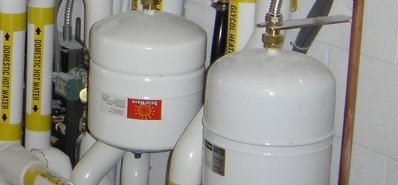
Before you get to the exciting part, you’ll need a few basic details about your system. Here are some good questions about the correct sizing for an expansion tank from a for the conscientious installer — which I know includes all of us. Question 1: Fill pressure vs. expansion tank size? (Or in other words, […]
Read more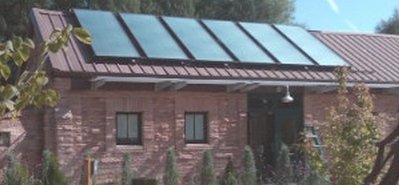
As you get ready to design a solar thermal system for your home, there’s one factor you may not be considering that could make a bucket load of difference: What’s the beginning temperature of the water you’ll be heating?In the United States’ northern climes, it’s likely 50°. In warmer, more southern climates, you’re likely beginning […]
Read moreOther posts have discussed light commercial systems for restaurants and other similar businesses. But what if you need a solar thermal system with a bit more uumph? Here’s the recipe for a solar hot water system that would be perfect for, say, apartment buildings or hotels. It provides 330 gallons of hot water per hour, […]
Read moreI’m asked, more and more, to provide a solar hot water system design for light commercial systems. There is, indeed, an effective and simple design template for smaller commercial systems that need to heat up to 330 gallons of water per hour or less. The actual system this template is based on is for a […]
Read morePressure or drainback? That’s probably the question I get asked more than any other: Should I choose the more popular pressure-glycol system, or go with a drainback system? Here’s the answer: It depends. Don’t you hate that kind of answer? Well, here’s a more specific answer: If the slope of the collectors and plumbing is […]
Read more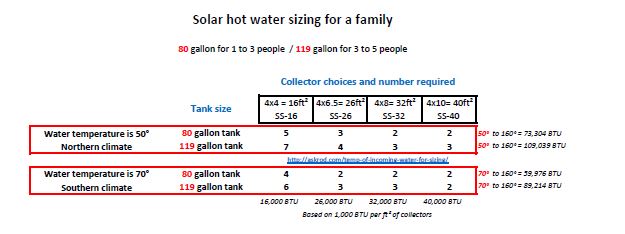
In recent years, I published a chart that helps size a solar hot water system for your home, but after hearing from some people I realized I needed to make it more simple. So, to back up and provide a bit more information: This chart shows what system is right for you, using actual sizing […]
Read more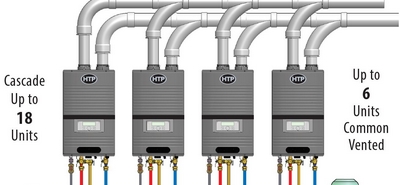
Here’s a new concept for commercial solar: a 250,000-Btu tankless water heater. It comes down to this simple philosophy: Don’t pay to heat ’til you need it. As you study this concept illustration, you’ll realize how simple this is. And, when you compare this setup to a conventional design, the cost will be half. back-up. […]
Read more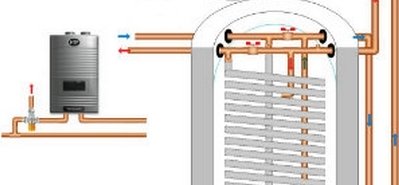
Today, as part of our ongoing series of basic solar designs, we look at a drainback system using an efficient solar storage tank and a tankless water heater as backup. This design is fairly uncomplicated and is, perhaps, the least costly system for residential applications. For all its simplicity, it delivers freeze and overheat protection […]
Read more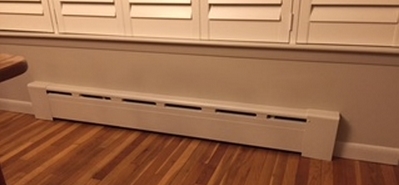
Do you need a more efficient (and expensive) modulating condensing boiler if you have baseboards? That was the question posed in a discussion group I follow, and many contractors said, “No, a cheaper, conventional boiler is just fine.” The baseboards require high temps of 180° at all times, they said, and condensing boilers save fuel […]
Read more
By Tom Scheel Red vs. Blue. Tastes Great vs. Less Filling. Kirk vs. Picard. Epic battles for which there really are no right answers. Enter into that pantheon the great debate between flat plate vs. evacuated tube solar thermal collectors. The answer, much to the chagrin of the true believers on either side is: it […]
Read more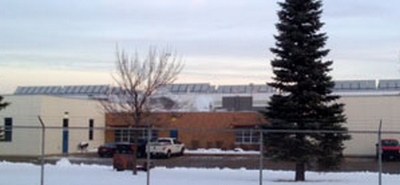
Out with the old (over complicated, expensive solar). In with the new (better and more efficient solar at lower cost). Case in point: the Minneapolis- St. Paul international Airport’s cutting-edge solar thermal system with a new innovative design approach. Two decades ago, conventional solar called for installing a water heater or, for larger systems, a […]
Read more